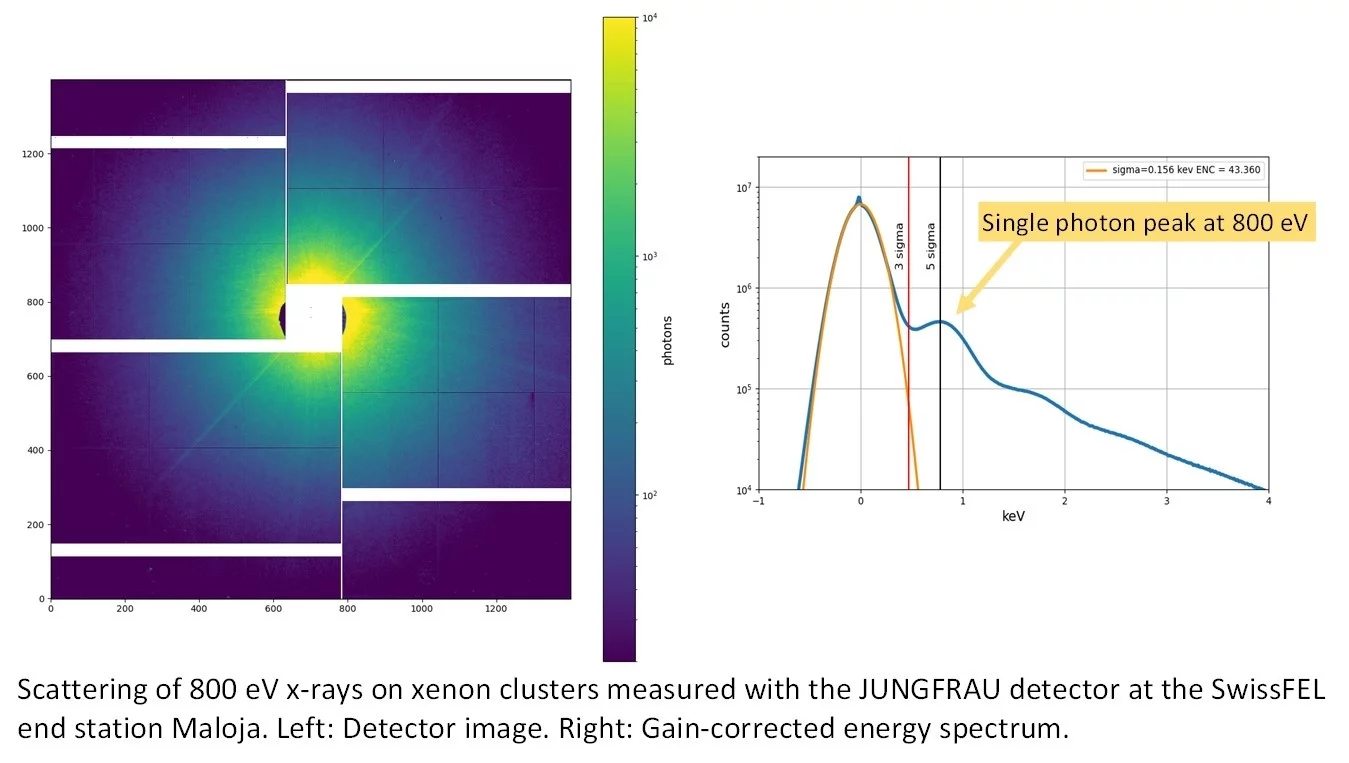X-ray photon science at free electron lasers (FEL) and synchrotron light sources fosters a large variety of research. Applications span from biology to solid state physics. The utilized photon energies vary depending on application and experiment type. Hard x-rays with energies around 10 keV, for instance, are the probe of choice to determine crystal structures. Soft x-rays with energies between 250 eV and 2 keV, on the other hand, are more sensitive to spin, charge, and orbital degrees of freedom. These properties, in particular, are highly relevant for research on new materials, catalysis, and quantum computing. As a result, specialized soft x-ray branches are in high demand at FELs and synchrotron sources.
But detecting x-rays at these low energies proves difficult. The soft x-ray photons are likely to be absorbed before they can reach the sensitive detector layers, and even if the photon reaches the detector and creates a signal, that signal is small compared to the noise of the readout electronics, which makes it difficult to detect. Currently available detectors that are able to resolve the small signal typically struggle with readout speed, active area, and dynamic range.
JUNGFRAU – a high-performance silicon pixel detector developed at PSI – could be able to overcome these limitations. While it was originally developed for hard x-ray detection at FELs and synchrotron sources, its high dynamic range, readout speed, and position resolution coupled with its comparably low noise, make JUNGFRAU an attractive candidate for soft x-ray detection.
In a recent publication, PSI scientists from the Laboratory of X-ray Nanoscience and Technologies tackle the challenge of making JUNGFRAU fit for soft x-rays. For this purpose, the team advanced on two fronts: They improved the design of the detector readout chip, successfully decreasing its electronic noise, and they added new sensors with altered x-ray entrance window that facilitate soft x-ray detection. The first instance of this improved system is now in operation at the SwissFEL low-energy beamline Maloja. With this system, the scientists could demonstrate single photon sensitivity down to 800 eV.
The team do not want to stop there, however. Their project aims to push the resolution capabilities of JUNGFRAU down to 250 eV, which is a typical lower limit for soft x-ray beamlines. The key ingredient of this endeavor are so-called low gain avalanche diode (LGAD) sensors. LGADs provide intrinsic charge multiplication, a feature that allows effectively amplifying the signal of a soft x-ray photon and lifting it over the noise limit of the detector. The first prototypes of these new sensors are currently in house at PSI, and the team of scientists are eager to put them to the test.
Contact
Paul Scherrer Institut
Dr. Viktoria Hinger
Laboratory for X-Ray Nanoscience and Technologies
Forschungsstrasse 111
5232 Villigen PSI
+41 56 310 39 01
Email: viktoria.hinger@psi.ch

